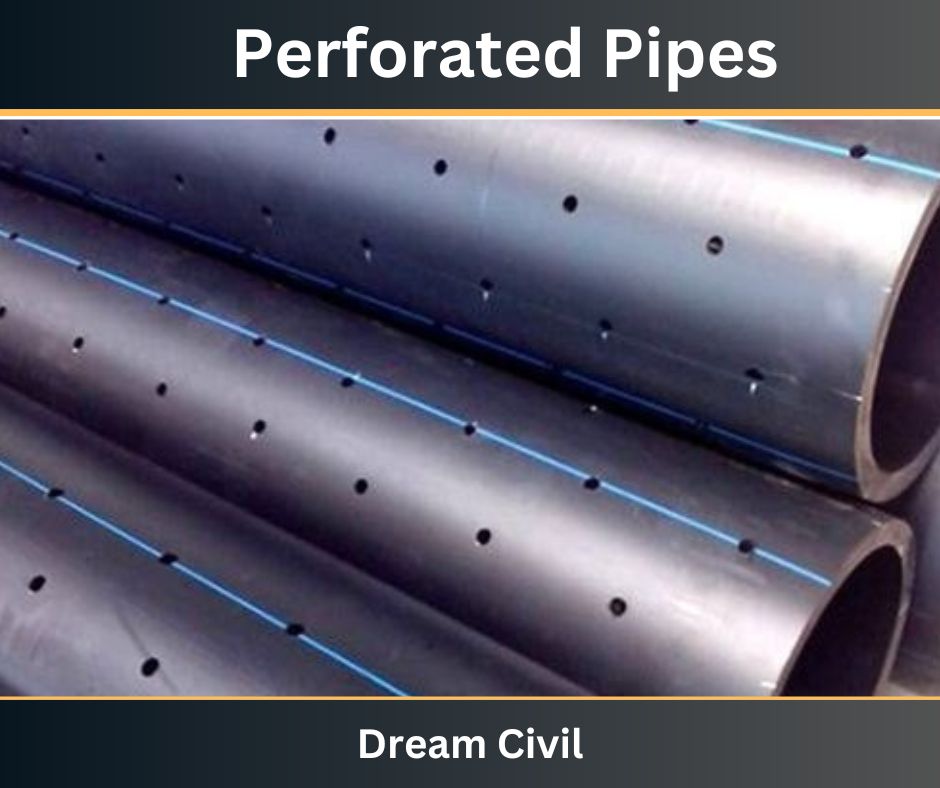Table of Contents
Perforated pipes may be defined as pipes with a series of tiny holes or voids that permit water to join or depart from them smoothly.
They are mostly established as a component of underground drainage systems and for outdoor services to enable manageable drainage and thereby control flooding on site.
1. Features of Perforated Pipes
The features of perforated pipes employed in construction are as follows:
a. Perforated pipes are an excellent idea to flow flooded yards, fields, and wet basements.
They are developed and prepared to be more flexible as they are always planted underground for a longer time.
b. The primary feature of a perforated pipe is to carry in water from the waterlogged ground via the perforations and permit the ground to remain dry.
Hence, the two major uses of a perforated pipe are the collection and transportation of water.
c. Perforated pipes can be PVC, cement, clay, and iron. The most famous ones are PVC pipes, that are very lightweight and flexible.
d. The number and size of holes in a perforated pipe differ according to the designs.
The perforation in the pipes can be developed by encountering down or up, which is conditional on the selected use of the drainage pipe.
e. Mostly, upward-facing perforation allows holding silt and debris from collecting in the pipe at the time of water collection.
At a similar time, pipes with perforations facing down assist in faster collection and distribution. The type of perforation is chosen relies on the use.

2. Uses of Perforated Pipes
a. For Common Domestic Use
Perforated pipes are established around residential buildings to control yards from flooding at the time of heavy rains. The perforated pipes employed for this objective have a less diameter of 5 inches.
Perforated pipes are also employed for waterproofing basements. They are established as buffer pipes around the foundation to control leakage into basements and water damage.
b. For Public Spaces
Major of the grassy places are transformed into gardens, so they are additionally prone to flooding. The problem is solved by establishing a big underground perforated pipe to purify the water away.
c. For Irrigation
Perforated pipes are set to hold extra water from the soil and cleared it straight down to the roots of plants or crops this permits to keep the irrigation land healthy without flooding the field.
3. Advantages of Perforated Drain Pipes
The advantages of perforated drain pipes are as follows:
a. Lightweight and high bulk, specific gravity 0.91.
b. Resistant to mildew, moisture, and rotting.
c. Exceptional dimensional stability.
d. Low pore site to prevent root fiber penetration.
e. High resistance to most chemicals.
f. High tear strength, high tensile strength.
g. High permeability to air and water.
4. Disadvantages of Perforated Drain Pipes
The disadvantages of perforated drain pipes are as follows:
a. Chances of clogging.
b. Routine and periodic maintenance are needed.
c. Increases construction cost.
5. References1. Content Filter & Authenticity Checking Team, Dream Civil International (Our team checks every content & detail to maintain quality.) |
Read Also: Roof Vents

